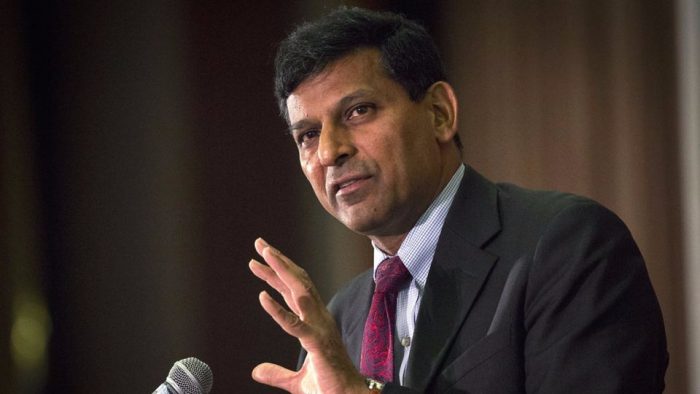
As I entered my last few days in office, I wanted to leave explaining why an independent central bank was necessary in India. An invitation from St Stephen’s College , which has produced so many good economists in India, was the ideal venue. There was one specific issue I wanted to clarify, the RBI dividend. Despite paying the largest amounts the RBI had ever paid to the government as dividend during my term as Governor, there was still constant suggestions that we could pay more. Some of these suggestions reflected an inadequate understanding of the economics at work in a central bank’s balance sheet. On my last day in office 3 September 2016, I addressed both issues.
The Independence of The Central Bank
Good Morning, It is great to be invited to speak at St Stephen’s College. In 1980, I toyed with the idea of joining my best friends in applying for admission to the BA in Economics, here. Because I had worked so hard for the IIT exam, however, I succumbed to the sunk cost fallacy and studied Electrical Engineering. I don’t regret a moment of that misspent youth but I hope you will grant me temporary membership of your club today!
Over the last few weeks, I have outlined the RBI’s approach to inflation, distressed debt, financial inclusion, banking sector reform, and market reform. Today, I want to explain why all this means India needs a strong and independent RBI to ensure macroeconomic stability. Then I will discuss what I think is needed to ensure such independence going forward.
THE NEED FOR MACROECONOMIC STABILITY
Growth is good , but growth with stability is better especially in a poor country where so many people live at the margin. For the RBI, it seems ensuring growth does not exceed our potential, adopting prudential policies that reduce our risk, and building sufficient buffers that the country is protected against shocks.
HAVING YOUR CAKE AND EATING IT TOO : INTEREST RATES AND THE EXCHANGE RATE
This mission, however, exposes the central bank to criticism. If we try and bring down inflation, interest rates will remain higher than borrowers desire. If inflation comes down, the currency will depreciate less than some exporters desire. If we push the banks to clean up, banks may be less tolerant towards habitual non-payers. Whatever we do, someone will object. The RBI then becomes the favourite scapegoat, for underperformance- if exports are not picking up, it is because interest rates are too high and because the exchange rate is too strong.
Unlike the complainants , the RBI does not have the luxury of economic inconsistency . If we start buying dollars in a big way to depreciate the exchange rate, we will be able to buy fewer government bonds if we are to maintain control over liquidity. The consequence will be higher interest rates in the bond market. Moreover, the depreciated exchange rate will mean higher inflation, which in turn will mean higher policy interest rates given the inflation objective the government has set for us. Once again, this means higher interest rates. Just look at Brazil or Russia to understand you cannot have a significantly depreciated exchange rates and lower interest rates at the same time if you want stable growth!
FIRST YEAR ECONOMICS: THERE IS NO FREE LUNCH.
RBI DIVIDEND POLICY
A fundamental lesson in economics is there is no free lunch. This can be seen in the matter of the RBI dividend. Some commentators seem to suggest that public, sector banks could be recapitalized entirely if only the RBI paid a larger dividend to the government. Let me explain why matters are not so simple. If what follows is complicated, trust me, it is. But pay attention, students, especially because it is about your money. I am sure you will understand.
How does the RBI generate surplus profits? We, of course, print the currency held by the public, as well as issue deposits ( that is, reserves) to commercial banks. Those are our fixed liabilities. As we issue these liabilities , we buy financial issues from the market. We do not pay interest on our liabilities. However, the financial assets we hold , typically domestic and foreign government bonds, do pay interest. So we generate a large net interest income simply because we pay nothing on virtually all our liabilities.
Our total costs largely for currency printing and banker commissions amount to only about 1/7th of our total net interest income. So we earn a large surplus profit, more than almost the entire public sector put together, because of the RBI’s role as the manager of the country’s currency. This belongs entirely to the country’s citizens. Therefore, after setting aside what is needed of the RBI, the RBI Board pays out the remaining surplus to the RBI’s owner, the government.
The RBI Board has decided it warns the RBI to have an international AAA rating so that RBI can undertake international transactions easily, even when the Government is in perceived difficulty – in the midst of the Taper tantrum, no bank questioned our ability to deliver on the FCNR (B) swaps, even though the liability could have been tens of thousands of crores. Based on sophisticated risk analysis by the RBI’s staff, the Board has decided in the last three years that the RBI’s equity position, currently around 10 lakh crores , is enough for the purpose. It therefore has paid out the entire surplus generated to the government, amounting to about Rs 66, 000 crores each in the last two years, without holding anything back. This is of the order of the magnitude of the dividends paid by the entire public sector to the government. In my last three years at the RBI, we have paid almost as much dividend to the government as in the entire previous decade. Yes, some suggest we should pay more, a special dividend over and above the surplus we generate.
(Extracted From Bestselling Book I Do What I Do by Raghuram G. Rajan is now in paperback, published by HarperCollins India )


















